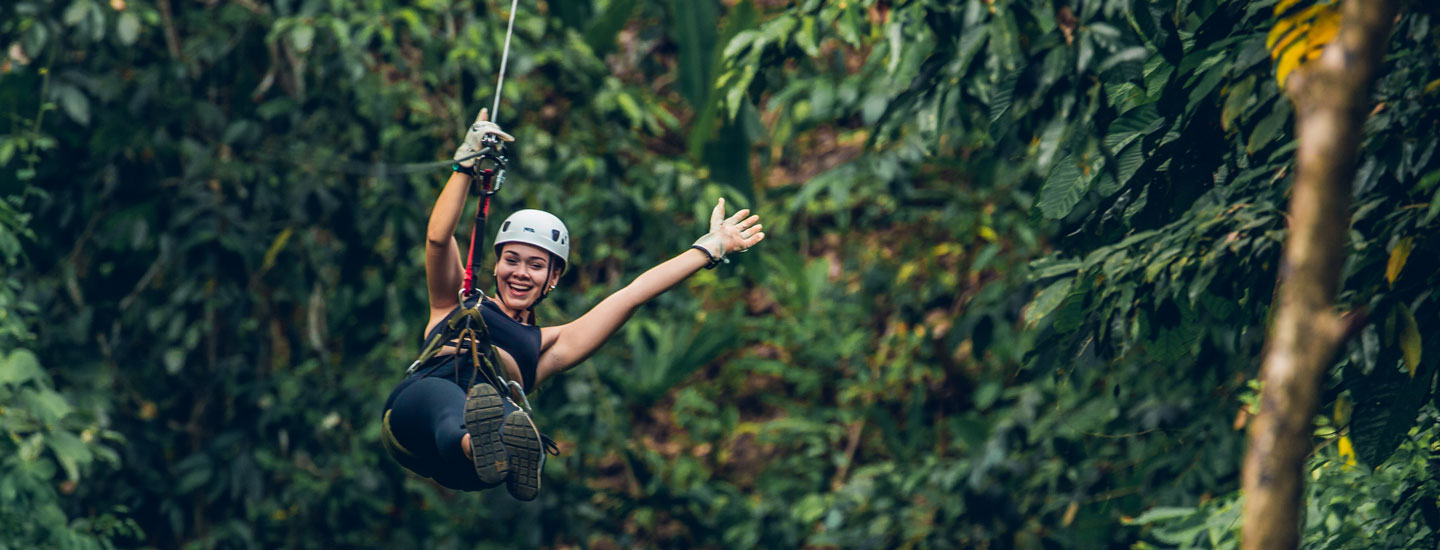
Hacienda Barú National Wildlife Reserve
We went to Costa Rica’s southern Pacific region and wanted to see its natural surroundings.
Have you ever visited the Hacienda Barú National Wildlife Reserve?
The opportunity to explore its trails is one that simply can’t be missed. While we were on the trails we saw so many species of animals: monkeys, sloths, birds… it was quite the experience, and we can’t wait to tell you more.
Protected natural area:
To begin with, you should know that this reserve is comprised of some 330 hectares of protected areas with primary and secondary tropical rainforest, wetlands, mangroves and coast (3 km of beach and 1 km that borders the mouth of Río Barú).
In addition, it is part of the Paso de la Danta Biological Corridor, which spans from the Río Savegre watershed to that of Río Terraba-Sierpe.
We were told that in June 2017, UNESCO declared Savegre to be a Biosphere Reserve (this includes land that encompasses the Hacienda Barú National Wildlife Reserve and includes the Río Savegre watershed). This is because the region is home to 20% of Costa Rica’s flora, as well as 54% of its mammals and 59% of birds.
Hacienda Barú also supports ASANA (www.asanacr.org), a non-profit association whose vision is to maintain and improve the biodiversity and connectivity of the Paso de la Danta Biological Corridor and the natural areas it connects. They are involved in various projects that have resulted in major advances in the protection of vulnerable species that live inside the Wildlife Reserve.

Wildlife passages: When the Costanera Sur highway was paved, the first system of wildlife passages was installed, which animals such as peccaries, raccoons, wild cats and monkeys use to cross the highway without the danger of being hit by vehicles.
These passageways consist of drainage ditches, square tunnels and elevated bridges throughout the segment that crosses between the refuge’s mountainous and lowland areas.
Camera traps: The camera trap networks that has been installed in the forest has allowed species such as the ocelot, jaguarundi and peccary to be monitored. The videos permit the behavior of these species to be studied, so that we can learn more about them.
Turtles: This project consists f protecting the eggs laid by the sea turtles who nest on the nearby beaches and keep them safe from predators and poachers. Once the baby turtles are born and ready, they are set free to begin their adventure in the ocean.
Environmental education: The Biological Center seeks to promote environmental education in the community. They do this through activities such as talks or guided visits to the Wildlife Reserve.

Research center
The Hacienda Barú Biological Research Center offers researchers and students the opportunity to stay in comfort and safety while carrying out their research or education or simply explore the trails of the Wildlife Reserve.
The center began operations in 2012 with the main objective of improving the conservation and restoration of the ecosystems in Hacienda Barú Wildlife Reserve and the neighboring areas. In addition, it seeks to promote the expansion of scientific knowledge about wildlife and the social context with a long-term vision while providing accommodations and other valuable experiences to researchers and students in relevant areas.
On arrival, you will see two buildings, each of which have eight rooms with a maximum capacity of 40 people. The beds are mostly bunk beds and the restrooms are spacious and comfortable. It also has a laboratory (392 m2), a classroom that seats 30 people, a dining area for 40 people as well as Wi-Fi and parking.
If you are interested in learning more about the species that are studied at the center and those present in Hacienda Barú Wildlife Area, check http://haciendabaru.org/especies/

Trails
The day we arrived we went to see the facilities and then try hiking through the trails of the Wildlife Refuge. The guides kindly gave us a quick introduction to the histroy of Hacienda Barú and its importance in the process of recovering the natural wealth of the region. It is important to mention that the land used to be pasture or agricultural land.
We hadn’t advanced even 100 meters before we saw an adult sloth taking a nap in one of the ceiba trees. It was just his way of welcoming us! A little further ahead, we reached a small cocoa plantation located on the edge of the Costanera Sur highway. Rigo, one of the two guides who was traveling with us, told us that the land used to be used for cocoa farming.
We went a little further along and when we got close to the highway, we found one of the tunnels and one of the bridges for monkeys or sloths, which were built to make it easier for fauna to travel from one part of the reserve to another without having to cross the road. The tunnels are really large, to the point that even we could cross them on foot.
Once we reached the other side, we saw different species of timber and fruit trees. We even saw a royal palm, a native species in Panama and Costa Rica that was used by natives to make their houses. It is also a protected species because of its fruits, which feed the animals in the Wildlife Refuge.
The tour is 2 km (1.3 miles) in total; there are also birdwatching and ziplining options. At the end of the trail, we found a group of white-faced capuchins who entertained us for a few minutes as they swung from tree to tree while we watched. They really put on a good show!
How to get there
You have to head down the Costanera Sur highway (route 34). The Hacienda Barú Biological Research Center is located 800 meters northwest of the bridge over Río Barú or the intersection with the highway between Dominical and San Isidro de Pérez Zeledón.
